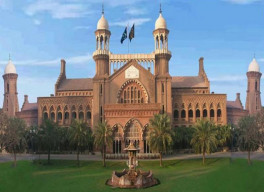
In cultures that are more conservative and private, people tend to stay close to what and who they know. It is no wonder then that intermarrying or consanguinity (marriages within close blood relatives) persists as a popular practice in Pakistan as well as among many Muslims worldwide.
In traditional societies, marriage is seen more as a union of two families rather than simply between two individuals. It is with this mindset that elders have for years married their children to relatives, with the most common choice being first and second cousins.
According to a study titled ‘The impact of consanguinity and inbreeding on perinatal mortality in Karachi’ by Dr Rafat Hussain, published in 1998, consanguinity is practised by about 63% of Pakistanis, of which over 80% are between first cousins. When looked at scientifically, first cousins share 1/8th of their genes inherited from a common ancestor. There are also unions between couples who are ‘double-first cousins’ - meaning they are related from their maternal as well as paternal side.
However, with the security of marrying within the family to preserve close ties and in many cases inheritance, comes the looming threat of adverse biological conditions for offspring. Among these are microcephaly and a further mutation, autosomal recessive primary microcephaly (ARP-MCPH) which is clinically described as a congenital neurological disorder. This means that the baby’s head is at least three times smaller than what it should be. Mild to severe mental retardation is also a risk.
Dr Abdul Hameed of the Institute of Biomedical and Genetic Engineering in Islamabad has been looking into this phenomenon with scientists from the Kohat University of Science and Technology. He and his colleagues, Shamim Saleha, Muhammad Ajmal, M Jamil and M Nasir found that this genetic mutation is surfacing in members of the Pakhtun pool at an alarmingly high level - 43% of families in northern Pakistan with microcephaly have autosomal recessive primary microcephaly.
According to a 2005 study, about one in 10,000 Pakistanis have microcephaly, compared to one in one million in the Caucasian (or white) population. “The high incidence should set alarms [ringing] for trends to change,” Hameed told The Express Tribune, adding that if consanguineous or in-breeding continues at the same rate, they will soon reach a “dangerous level”.
But surely, the Pakhtun are not the only ones who intermarry in Pakistan and by that reasoning the ‘underdeveloped head’ condition should surface in other genetic pools. “Of course, inter- marriages are practised by Punjabis and other communities as well,” explained Hameed. “However it is not as often as seen in the Pakhtun. This is why the severity of their situation is at a relatively higher level.” Some reasons include geographical proximity; tribes are settled in one area and do not want their daughters to move too far away from home.
Underdeveloped mental capacities are always a part of microcephaly but to varying degrees - from very mild to moderate. Very rarely is it more than moderate and accompanied by epilepsy or fits. “Usually the patients with microcephaly are easy to handle and they are able to learn several self-help skills depending upon the environment and economic status of parents etc.,” explained Dr Jawad Hassan, who is an assistant professor with the Department of Biochemistry at Shifa College of Medicine.
In some communities, the extent of consanguinity and inbreeding is so deeply entrenched that marrying within the tribe is also not recommended. While the mutation in either or both parent is not genetic, marrying a close blood relative will spread the mutation. If both parents carry the mutated gene, the child has a 25% chance of being affected. “If one parent is a carrier for the mutation or the defective copy of the chromosome and the other partner is ‘normal’, their children will be 100% ‘normal’,” Hameed explained. In short, the condition can be completely avoided if people with a family history avoid intermarrying.
An international expert added to the corpus of research by pointing out that the good news is that as family sizes go down, double first cousin marriages in particular will become increasingly difficult.
Anyone who is concerned can be easily tested for the appearance of the mutation free of cost at some centres in Lahore and Islamabad.
Published in The Express Tribune, July 23rd, 2011.

















COMMENTS
Comments are moderated and generally will be posted if they are on-topic and not abusive.
For more information, please see our Comments FAQ